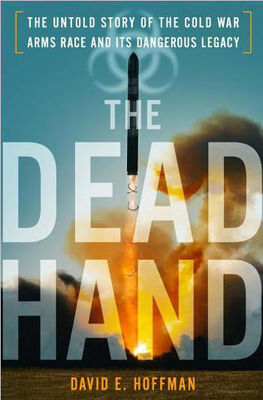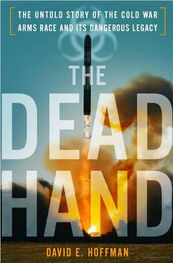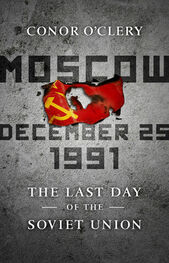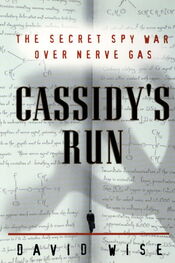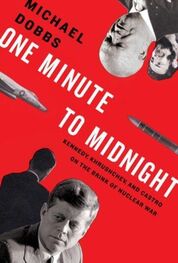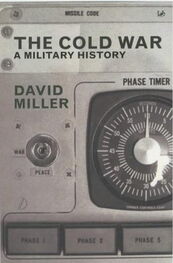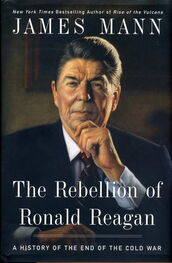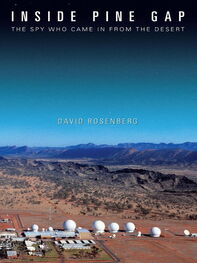The Soviets were especially worried about the Pershing II mediumrange missiles that the North Atlantic alliance was preparing to deploy in West Germany in 1983. The Kremlin feared these missiles had the range to reach Moscow, although the United States said they could not go that far.
In February 1982, Reed learned that a regular high-level nuclear weapons exercise was planned for the coming weeks. The purpose was to test the ability of the National Military Command Center, the war room at the Pentagon that would receive first word from Cheyenne Mountain of a nuclear attack, to support the president and secretary of defense in a crisis. Reed seized on the exercise as a chance to get Reagan involved, and to force an overhaul of the antiquated system. On February 27, Reed, Clark and a few other White House staffers explained the basics to Reagan—how he would get information in a crisis, how he would be protected personally and how he would send messages out to the forces. “We described the ways in which the start of nuclear hostilities might appear,” Reed recalled, “the times available for response, and the forces at his disposal.”
The formal exercise, code-named Ivy League, began on Monday March 1, 1982, in the White House Situation Room. 26Former Secretary of State William P. Rogers played the role of president. The reason for a stand-in was to make sure the real president didn’t tip his hand, revealing how he might react in an actual crisis. The exercise started with a threat briefing. Reed recalled, “An intelligence officer laid out the Soviet order of battle, then the warning systems began to report simulated missile launches and impact predictions. The minutes flew by until a screen in that cramped basement room began to show red dots on a map of the U.S.-simulated impacts. The first ones annihilated Washington, so this briefing was assumed to be taking place in some airborne command post over the central plains.”
“Before the President could sip his coffee, the map was a sea of red,” Reed said. “All the urban centers and military installations in the U.S. were gone. And then, while he looked on in stunned disbelief, he learned that the Soviet air force and the second round of missile launches were on their way in. For the next half hour more red dots wiped out the survivors and filled in the few holes in the sea of red.”
Rogers sat at the head of the table, and Reagan sat next to him. Rogers went through the plan, asking questions about how to respond, what options were available and how much time. Reagan was gripping his coffee mug, surprised at the suddenness of the destruction. 27“In less than an hour President Reagan had seen the United States of America disappear,” Reed recalled, adding: “I have no doubt that on that Monday in March, Ronald Reagan came to understand exactly what a Soviet nuclear attack on the U.S. would be like.”
That evening, Reagan and his advisers and several senior Pentagon officials gathered once again in the Situation Room. This time, there was no stand-in president. Reagan was given a full and careful briefing on the Single Integrated Operational Plan, the secret nuclear war plan. The briefing was about the precise steps Reagan would have to take. According to Reed, Reagan didn’t know much about it, although he was first briefed on it after the 1980 election. “The SIOP briefing was as scary as the earlier presentation on the Soviet attack,” Reed said. “It made clear to Reagan that with but a nod of his head all the glories of imperial Russia, all the hopes and dreams of the peasants in Ukraine, and all the pioneering settlements in Kazakhstan would vanish. Tens of millions of women and children who had done nothing to harm American citizens would be burned to a crisp.”
At a third meeting, attended only by Clark and Reed, the president rehearsed the procedures by which he would select options from the war plan and insert the authenticator code from the card in his pocket. Then the exercise ended. But, Reed said, “I have no doubt that in Reagan’s mind it was not over at all.” The exercise “was something that really had happened to him. It focused his mind on the need for protection from those red dots.”
In early 1982, Reagan embarked on a radical plan to confront the Soviet Union from within. In the years of Cold War containment, no administration before had tried to exploit the Soviet Union’s internal tensions with a hope of toppling the regime or forcing it into dramatic change. 28On February 5 Reagan ordered a study of U.S. national security objectives and the Cold War, the first of his presidency. Reed, who oversaw the interagency work that went into the study, said Reagan had decided to go beyond the assumptions of the past. Words like détente, containment and mutual assured destruction were “out,” he said, and “the Cold War was no longer to be viewed as some permanent condition, to be accepted with the inevitability of the sun’s rising and setting.” 29At the time, this was an audacious idea. John Lewis Gaddis, the Yale professor and Cold War historian, recalled that when Reagan took office, the Soviet Union seemed an unyielding presence. “It was not at all clear then that the Soviet economy was approaching bankruptcy, that Afghanistan would become Moscow’s Vietnam, that the appearance of a Polish labor union called Solidarity portended the end of Communism in Eastern Europe, or that the U.S.S.R. would disappear in just over a decade,” he said. 30
The study led to a top-secret order, National Security Decision Directive 32, which Reed drafted. Titled “U.S. National Security Strategy,” the directive incorporated the long-standing Cold War policy of containment. But the Reagan directive also went further, and raised a new, more ambitious goal: to force the Soviet Union “to bear the brunt of its economic shortcomings, and to encourage long-term liberalizing and nationalist tendencies within the Soviet Union and allied countries.” Reagan wrote in his diary after a briefing on the Soviet economy, “They are in very bad shape and if we can cut off their credit they’ll have to yell ‘Uncle’ or starve.” 31
The extreme delicacy of Reagan’s directive was evident in the way Clark handled the paperwork. Reagan took the draft directive home with him to review on the evening of May 4, 1982. On May 5, at 9:30 A.M., in the presence of Reed and Clark, he signed it. But it was so explosive that Clark did not put it into the White House filing and distribution system until May 20. Clark apparently feared there would be interference from others in the cabinet. 32
Reagan had struck a confrontational approach to the Soviet Union from the outset of his presidency, from his first words about lying and cheating, to his rearmament program, and with the CIA’s covert actions in Afghanistan and Central America. The new directive accelerated this drive and made it the official policy of the United States.
On May 9, Reagan turned to nuclear arms control in a commencement address at his alma mater, Eureka College, marking the fiftieth anniversary of his own graduation. In one eloquent passage, Reagan talked about the horror of nuclear war and vowed to “ensure that the ultimate nightmare never occurs.” He also used the address to make his first major proposal since taking office for controlling long-range nuclear weapons—including the ballistic missiles that were so fearsome and fast. He called for both the United States and Soviet Union to reduce their ballistic missile warheads to “equal levels, equal ceilings at least a third below the current levels,” and then specified that “no more than half of those warheads be land-based.” These words sounded equitable, but they were not. The Soviets had a much larger share of their warheads on land-based missiles, while the U.S. weapons were predominantly at sea and in the air. Reagan was often ignorant of such details, and nearly a year later, he confessed that he did not realize that the Soviet strategic force was heavily concentrated in land-based missiles. The Eureka speech underscored his passive management style, often more focused on performing than the details of governing. 33
Читать дальше